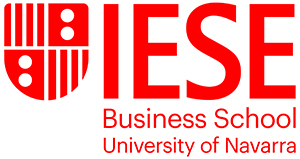It is often said that everyone wants to live longer, but no-one wants to be old. In the business world, as in life, the passage of time inevitably has an effect on all of us. And when we enter the so-called senior stage – from ages 50 to 69 – a series of contradictions appears, which can be hard to manage.
On the one hand, we have lots of knowledge and experience, which gives us a unique perspective and more opportunities to add value and enjoy our work. On the other hand, it is also a time when tiredness and saturation can begin to take their toll after a long career. Furthermore, although this is often the era of recognition, and achieving roles that have greater responsibility and a greater impact, it is a relatively short era. Retirement is approaching, and the generational changeover is really beginning to rear its head.
In spite of all this, the dream of being useful to society can be difficult to shake. Some studies confirm that 75% of senior talent would like to keep working after retirement age. Other data show that, since 2008, senior employment is growing in all European countries, and that the majority of EU member states have more senior workers with higher education qualifications than with basic education – which is essential for avoiding unemployment in this stage.
But, are we prepared to continue working in this last phase of our careers at any cost? According to an IESE study, the answer is categorically no. There are at least three deciding factors that lead us to remain committed to our profession beyond the age of 50:
- Feeling that we are adding value.
- Receiving recognition for our labor.
- Having a dream for the work we are doing.
Although the vast majority of the population is in salaried employment nowadays, continuing to work throughout the senior stage will involve, in many cases, being prepared to adapt to significant changes: whether that be devoting oneself to a different type of work, seeking employment in another company, being an entrepreneur, or even choosing to pursue unremunerated collaborations.
In any case, having a suitable plan is key to extending and relaunching the working lives of senior talent, even before retirement age. However, according to the same IESE survey, 75% of professionals do not know what steps to take, or are not adequately preparing for this next phase.
Debunking the myths that present the greatest obstacles in the senior stage
One of the greatest difficulties when it comes to entering the senior stage is how best to question and eliminate the prejudices that shape the general opinion on age that exists in companies. Perspectives which are widely accepted, and which reduce options and hinder the expectations of those who want to continue progressing after the age of 50. The most common are:
- Retirement age. This seems to be an obligation, and even an aspiration for many workers, but for many others, it is not. It is simply a reference point.
- Technological changes. This does not mean expecting older people to be experts in the latest applications and technologies, but with appropriate training, they can adapt very well.
- Idea of happiness. It is a concept that has been widely debated throughout history, but for many people, happiness is more closely linked to making a contribution than to leisure or rest.
- Reinventing oneself. You must not be afraid to transform yourself if you want to enter the senior stage with your best foot forward. Inertia will lead directly to retirement.
In this sense, the IESE professor Guido Stein makes the case that the vitality, satisfaction and motivation of the talent is not dependent on age, but rather on how we arrived at that age. And he states that, nowadays, “in general, we arrive at retirement age in better health than ever”. Therefore, some studies maintain that we should redefine our vision of aging and chronological age, as statistically, in countries like Japan, people who are 75 years old now have the same physical and mental capabilities as someone who was 65 two decades ago.
How to relaunch a senior professional’s career
In an analysis of the importance acquired by senior employees in organizations, the consultancy firm Bain examined how the interests and needs of workers evolve over the years, identifying the two profiles that are most dominant within senior talent, based on their motivations and priorities. We are talking about:
- Artisans. Professionals whose main focus is their passion for mastering their trade. They want to do work that interests them, and they value autonomy above all.
- Benefactors. Employees who identify with the idea of service. They feel rewarded when they see their actions having a positive impact on the lives of others.
According to the IESE professor José Ramón Pin, the long process of preparing for the senior stage should start with a step that is tricky, realistic and sometimes painful: considering your position, your identity and your role in the company, and in the world of work. “We need to honestly ask ourselves who we are, who we want to be, and who we can be in this new phase. In order to do so, it is necessary to take a strong step forward, with an emotional reset which convinces us that we can adapt to another professional life that will make us feel fulfilled”, points out Pin. For the professor, a good adaptation process should include these three points:
- Being aware. Reconsidering what and who we want to be. Because, most likely, in a few years, we won’t want to, or we won’t be able to, continue doing the same old thing we had been doing. In seniority, there is continuity, but also a break. In some ways, it’s like starting over again.
- Taking one step forward. Embracing the future with hope and energy. It is not enough to let yourself be carried along until you suddenly find yourself at retirement age. The future senior has been working on this since before the age of 50, hoping to be in good shape for at least 20 more years.
- Designing a detailed plan. Tracing a route that connects our current location with where we want to be in the next 10 to 15 years. In order to move forward with this plan, we will probably need to extend our network of contacts, get training in specific areas, or negotiate the reorientation of our career with the company.
But the responsibility is not only in the hands of the professionals themselves. Companies also have a fundamental role to play when it comes to facilitating the transition of talent into the senior stage. Among other measures, organizations can apply the following:
- Strategies for retaining and recruiting senior professionals: identifying what motivates them, according to their different profiles, and what positions they can occupy within the company.
- Refresher programs: so that the senior employees’ skills respond to the needs of the business for the next 10-15 years.
- Plans that are adapted to the strengths and priorities of the senior talent: with personalized suggestions. BMW, for example, offers senior employees part time roles guiding young people in their careers.
Compromise, planning, strategy, adapting, mentality, training… There are many other elements that are required in order to successfully overcome the challenges that confront both senior talent, as part of their transition, and the organizations that don’t want to lose the value that these workers provide. The IESE program Relanzamiento del talento sénior: nuevos horizontes profesionales helps senior leaders and professionals keep moving forward along their career path at a time where they have optimal experience and knowledge.
Senior talent management according to ATOS
The way older people adapt to new technologies does not depend on their age as much as it does on the willingness of professionals and companies to design and implement training and refresher programs. There have already been some success cases.
In 2021, ATOS, the global technology company, launched a program to close the skills gaps for the 21,000 of its workers who were over 50 years old. Since then, it is the employees themselves who need to find out what gaps they have and choose the courses and certifications they need to refresh their skills. ATOS also invites them to participate in training programs as teachers.

















